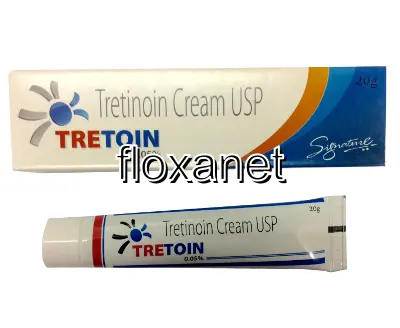Buy Tretinoin Online from Trusted UK Pharmacy
| Package | Dosage | Price | Price per Dose | |
|---|---|---|---|---|
| Dosage: 0.1% | ||||
| 5 tube | 0.1% | £103.79 | £20.76 | |
| 4 tube | 0.1% | £91.33 | £22.84 | |
| 3 tube | 0.1% | £80.95 | £26.99 | |
| 2 tube | 0.1% | £60.19 | £30.10 | |
| 1 tube | 0.1% | £36.32 | £36.32 | |

Tretinoin Description
Overview of Tretinoin
Tretinoin, also known as all-trans retinoic acid, is a powerful topical medication widely used in dermatology. It is a derivative of vitamin A that has been extensively studied for its ability to treat various skin conditions. Its primary function is to promote skin cell turnover, which helps to improve the appearance of skin and treat specific dermatological issues. This medication is available in different formulations such as creams, gels, and solutions, allowing for tailored treatments based on individual needs.
Uses and Benefits
The main use of Tretinoin is to treat acne vulgaris. It effectively reduces the formation of pimples, blackheads, and whiteheads by preventing the clogging of pores. Many users report a significant improvement in their skin’s texture and clarity after consistent use. Additionally, Tretinoin is beneficial in treating fine wrinkles, uneven skin tone, and sun spots caused by sun damage. Its ability to stimulate collagen production helps in achieving smoother and more elastic skin over time.
How Tretinoin Works
This medication works by encouraging the rapid turnover of skin cells. It promotes the shedding of old, dead skin and the growth of new, healthier skin. This process can help to clear blocked pores and reduce inflammation associated with acne. For anti-aging purposes, increased collagen synthesis leads to a reduction in fine lines and a more youthful appearance. Regular use of Tretinoin ensures continuous renewal of skin cells, which is essential for maintaining skin health and appearance.
Potential Side Effects
While Tretinoin is highly effective, it can cause side effects, especially when beginning treatment. Common reactions include skin irritation, redness, dryness, peeling, and sensitivity to sunlight. These effects usually diminish after a few weeks of use as the skin adjusts. To minimize adverse reactions, it is recommended to start with a lower concentration and gradually increase it. Users should also apply sun protection regularly to prevent sunburns. In rare cases, allergic reactions or severe irritation may occur, requiring medical attention.
Usage Tips and Precautions
It is important to follow the prescribed instructions carefully when using Tretinoin. Usually, a thin layer is applied once daily, preferably at night. Clean, dry skin ensures proper absorption and reduces the risk of irritation. Avoid applying other skincare products containing alcohol, astringents, or exfoliants simultaneously, as these may increase irritation. Pregnant or breastfeeding women should consult a healthcare provider before use. Consistent use and patience are key, as it may take several weeks to notice significant improvements.
Conclusion
Tretinoin remains a cornerstone in dermatological treatments due to its proven efficacy in managing acne and signs of skin aging. Despite the potential for side effects, proper usage and precautions can help mitigate risks, allowing users to achieve clearer, smoother, and more youthful skin. Regular consultation with a healthcare professional is recommended to optimize treatment outcomes and address any concerns that may arise during the course of therapy.
See Also

